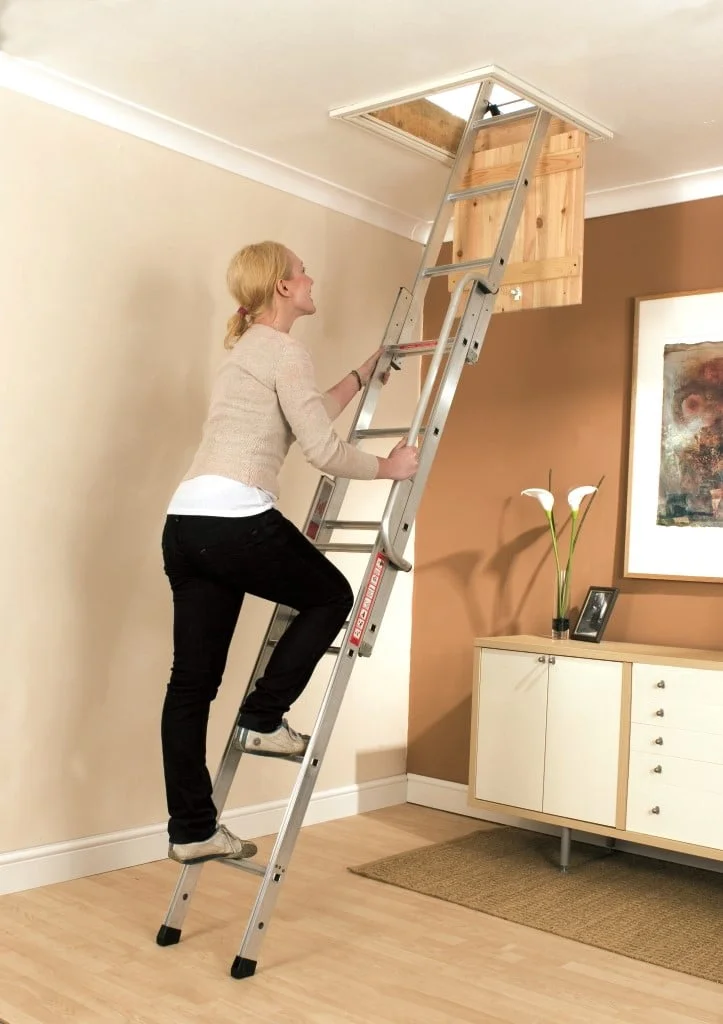Getting into the attic can often be a daunting task. The hatch is usually located in a hard-to-reach area, requiring a ladder, strength, and sometimes even contortionist-like skills. Thankfully, there is a solution that makes accessing your attic a breeze – the attic hatch opener.
With an attic hatch opener, you no longer need to struggle or put yourself at risk to gain access to your attic. This handy device simplifies the process and ensures your safety while allowing you to easily enter your attic whenever you need to. Here, we provide you with all the information you need to make your attic more accessible.
Considerations for Installing an Attic Hatch Opener
Installing an attic hatch opener requires careful consideration of several factors. Some of which are the ladder type, dimension of room where the attic is, and the ceiling flooring type and load capacity. We discuss this in detail below.
Ladder Type
There are different types of attic ladders available in a variety of sizes and materials, including aluminum, wood, and steel. These ladders allow simple access to your attic via a weather-sealed opening on the roof’s floor. When not in use, the ladders fold or slide into the aperture out of sight, yet they drop just as effortlessly whenever you want to climb up. We discuss the types in detail next.
-
Telescoping Attic Ladders
Telescoping attic ladders are available in transportable or semipermanent forms, allowing them to be mounted or placed in an attic.
Because fitting mechanisms on the side supports and allow them to collapse into themselves, these ladders take up less room than folding ladders. When needed, all you need to do is pull the bottom step to expand the ladder.
-
Folding Ladder
Folding ladders are one of the best options for attics because they are more sturdy and stable. folding attic ladders can be folded into two, three, or four pieces.
The advantage of a folding ladder over a telescoping loft is that they are stronger and easier to use. However, they occupy a lot of attic floor space since they recline on the floor when closed.
-
Scissor attic ladder
A loft scissor ladder has scissor-style folding rungs for easy storage. It doesn’t slide too fast while unfolding and does not require a huge clearance area to unfurl.
Scissor attic ladders are more firmly and closely packed together unlike folding ladders and are more durable than telescoping climbers. The scissor-style ladders are a great choice.
Ultimately, the ladder type depends on your individual choice and space available. This also determines the actuator type to use.
Dimension of Room where attic is
The dimension of the room where an attic is should be correctly measured using standard calculations. Measuring ensures that there is enough space area for the installation of the attic ladder. The room should be measured from wall to wall in length and floor to floor in width.
You can calculate the required size using a span calculator, which will provide 2 by 10 pieces spaced every 16 inches. The floor space should be about 70 square feet minimum. A minimum 22 1/2 x 54 inch roof opening is required for full-size attic ladders. Your initial step should be to look for a room big enough for this opening and a proper landing area.
Ceiling Flooring Type and Load Capacity
The ceiling height should be 7.5 feet or higher in at least 50% of the usable floor area. The floor can be covered with thin plywood panels, but the ventilation can be achieved by installing them in a large space area.
It is also essential to understand that attic ladders may have a weight limitation ranging from 200 pounds to over 400 pounds. A small household may not need to take up heavy load to the attic. Most heavy duty ladders can only take up a load capacity of 300 pounds.

How to Set Up An Automatic Attic Hatch Opener Using a Linear Actuator
Using an electric linear actuator to automate an attic hatch is simple, reliable, and convenient. To install an automatic attic hatch opener using a linear actuators, you’ll need;
- Linear Actuator.
- Dppt Controller or Remote Control.
- Mounting Brackets.
- Screws and bolts.
- Electric cables.
Installation
- Install the mounting bracket on the attic frame.
- Attach the linear actuator to your attic system.
- Get your cables and connect the linear actuator to a power source.
- Test the linear actuator to ensure proper functioning.
If the automated attic isn’t working properly, you may need to adjust the linear actuators’ velocity, position, or power source. Proper installation and operation of linear actuators will ensure that the automated attic functions seamlessly and efficiently for a long time.
How To Lower An Attic Ladder By Remote Control
You can lower an attic ladder using a remote control or switch. Once the installation is done, ensure that the ladder is properly aligned and secured for smooth operation.
You must also wire and synchronize the remote control with the control system of the linear actuator.
Conclusion
Every home needs an attic ladder for easy access to the loft. Whether you are installing an attic ladder or an automated attic with a linear actuator, it is important to choose an access door that makes the process seamless and hassle-free.
Need more ways to use actuators around the home? Here are 55 ways to use actuators in home automation.


